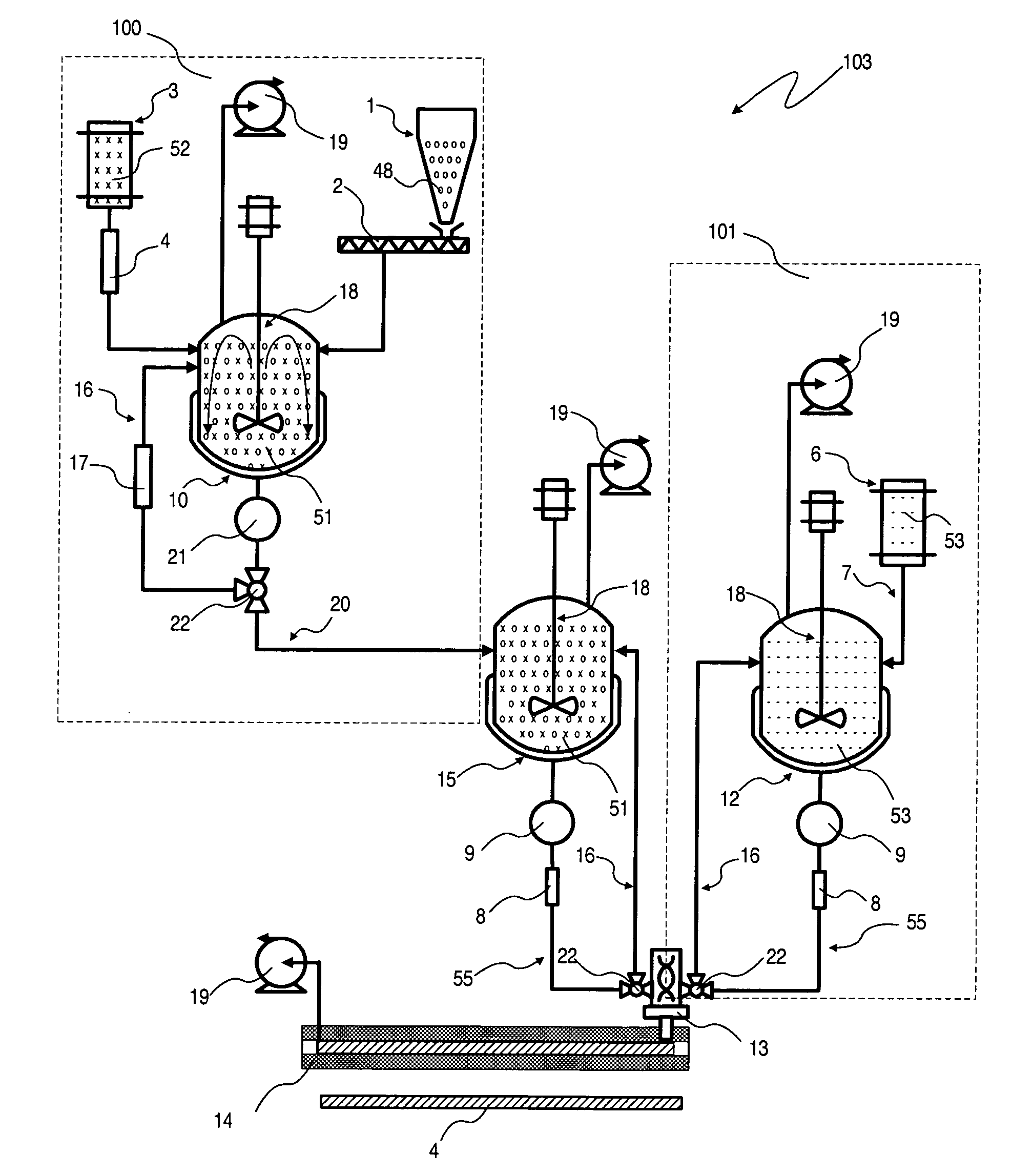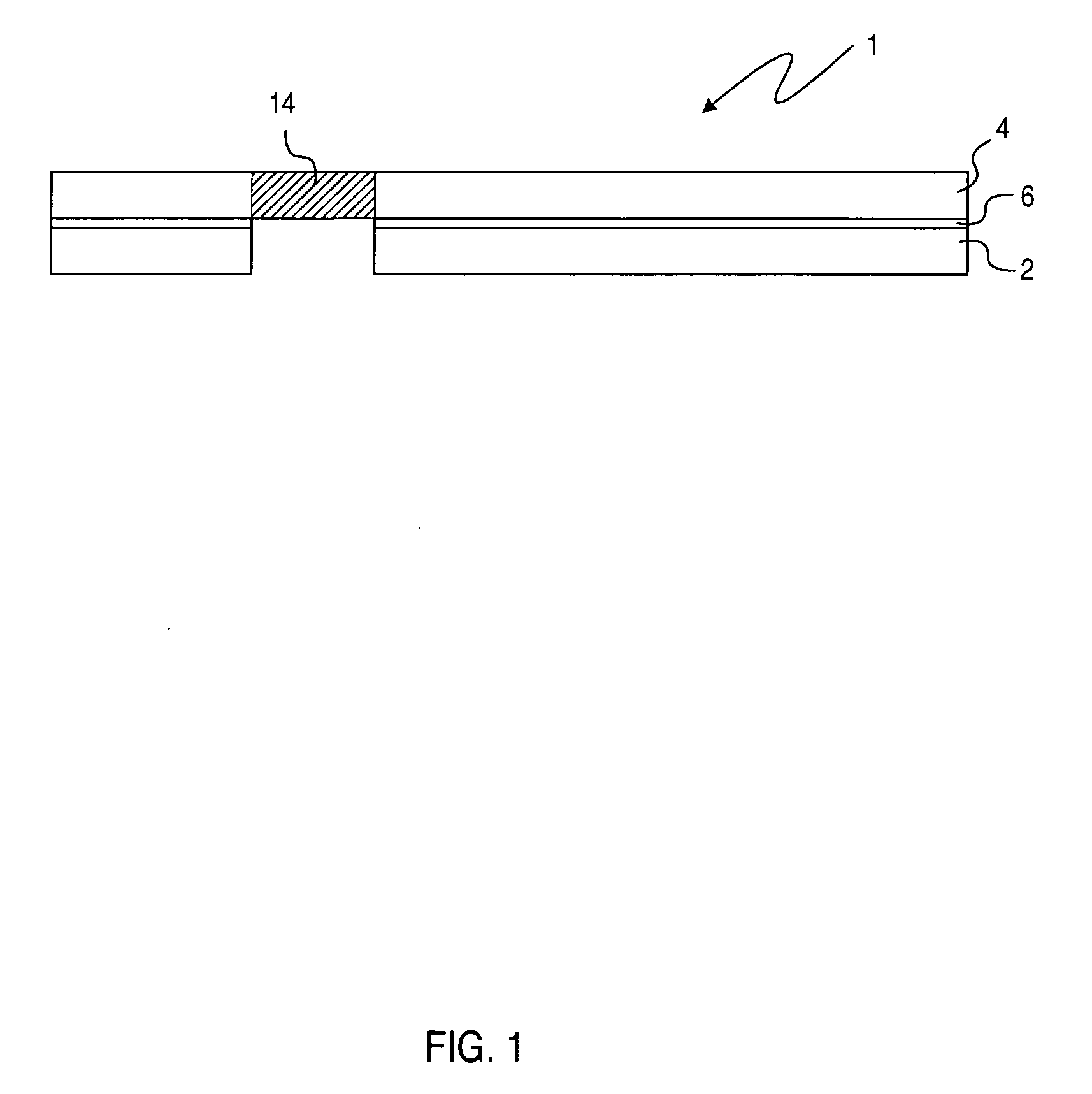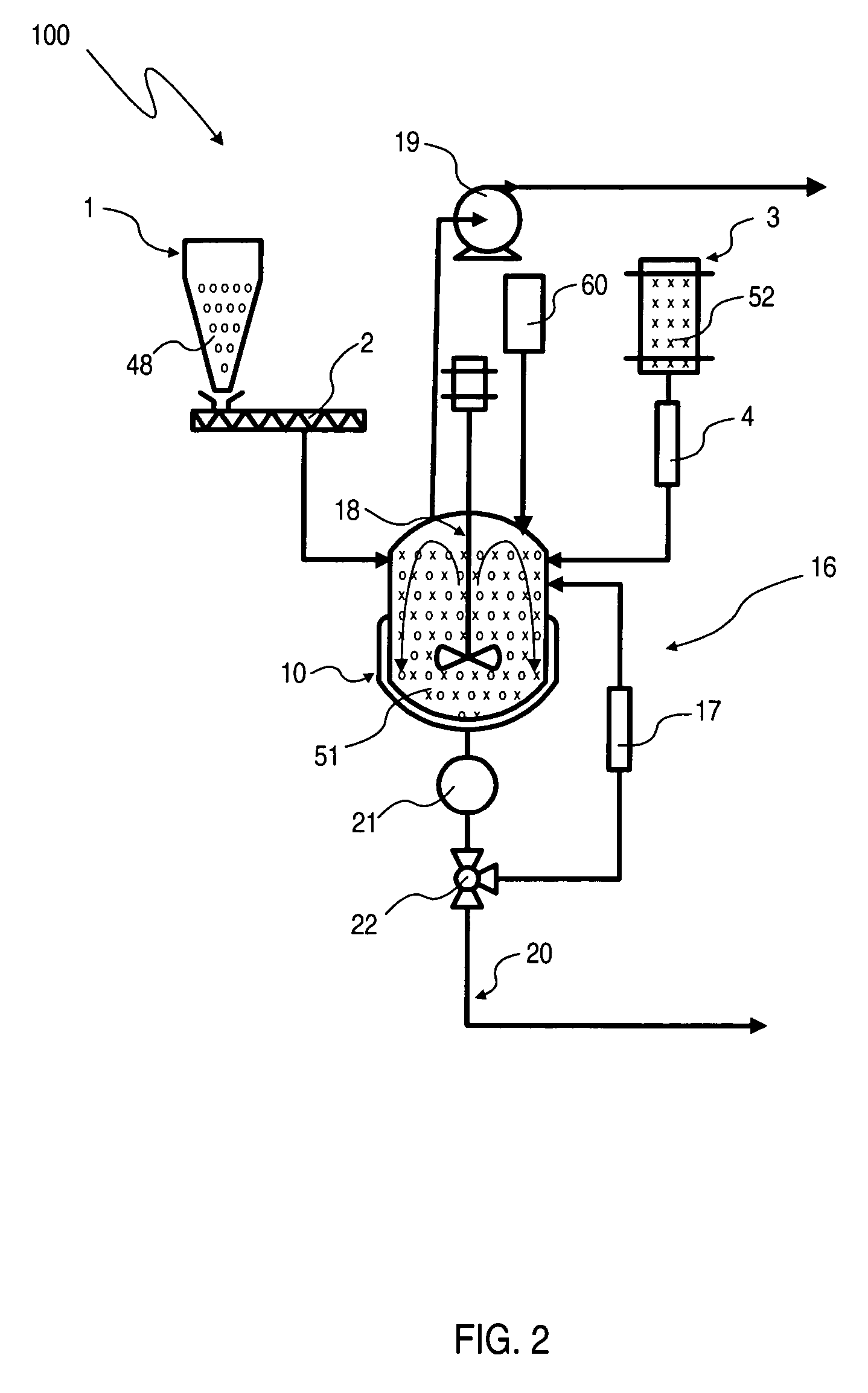Method for forming a porous polishing pad
a technology of polishing pads and porous surfaces, applied in the field of polishing pads, can solve the problems of unpredictability, perhaps detrimental, polishing performance, detrimental to polishing performance, etc., and achieve the effect of improving polishing performance and polishing performan
- Summary
- Abstract
- Description
- Claims
- Application Information
AI Technical Summary
Benefits of technology
Problems solved by technology
Method used
Image
Examples
Embodiment Construction
[0022] The present invention provides a porous polishing pad. Further, the present invention provides a novel apparatus and method for forming a porous polishing pad by the in-situ expansion of fluid-filled unexpanded microspheres. In particular, the present invention utilizes a unique premix apparatus to produce the porous polishing pad in, for example, an injection-reaction molding or casting process. The premix apparatus comprises, a novel premix prep tank for pre-mixing the unexpanded microspheres and the polymeric materials (e.g., polyols or prepolymers) to form a homogeneous pre-mixture. The premix apparatus may further comprise a vacuum to remove or degas any mechanically entrained or dissolved gas. In addition, the novel apparatus provides tremendous flexibility in increasing manufacturing scale and in pad-type variation. In other words, the novel apparatus allows, for example, continuous reaction-injection molding or casting and the use of almost an endless combination of d...
PUM
| Property | Measurement | Unit |
|---|---|---|
| average cell diameter | aaaaa | aaaaa |
| average cell diameter | aaaaa | aaaaa |
| average cell diameter | aaaaa | aaaaa |
Abstract
Description
Claims
Application Information
 Login to View More
Login to View More - R&D
- Intellectual Property
- Life Sciences
- Materials
- Tech Scout
- Unparalleled Data Quality
- Higher Quality Content
- 60% Fewer Hallucinations
Browse by: Latest US Patents, China's latest patents, Technical Efficacy Thesaurus, Application Domain, Technology Topic, Popular Technical Reports.
© 2025 PatSnap. All rights reserved.Legal|Privacy policy|Modern Slavery Act Transparency Statement|Sitemap|About US| Contact US: help@patsnap.com



